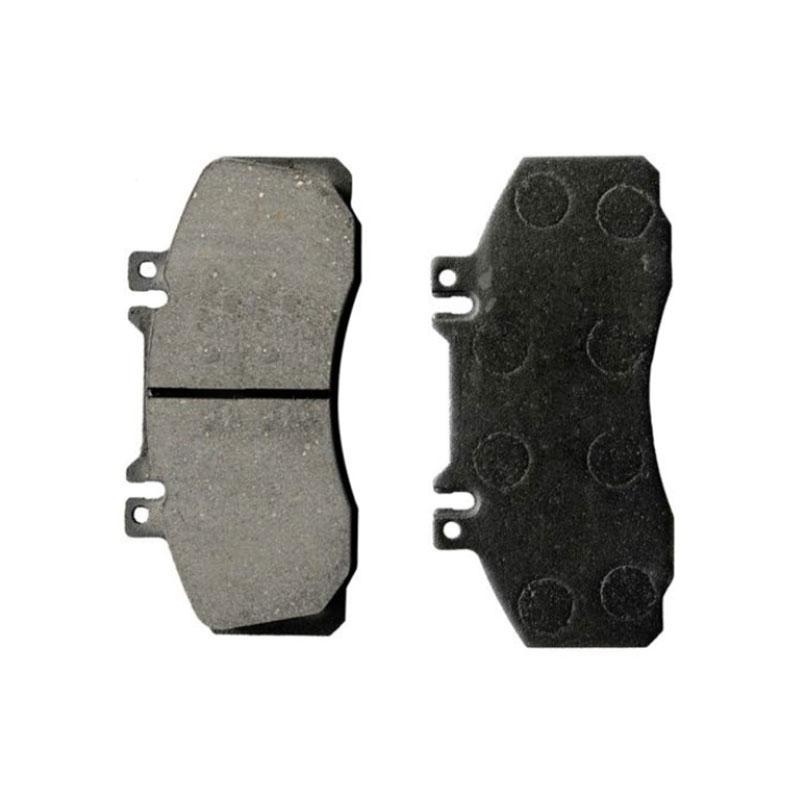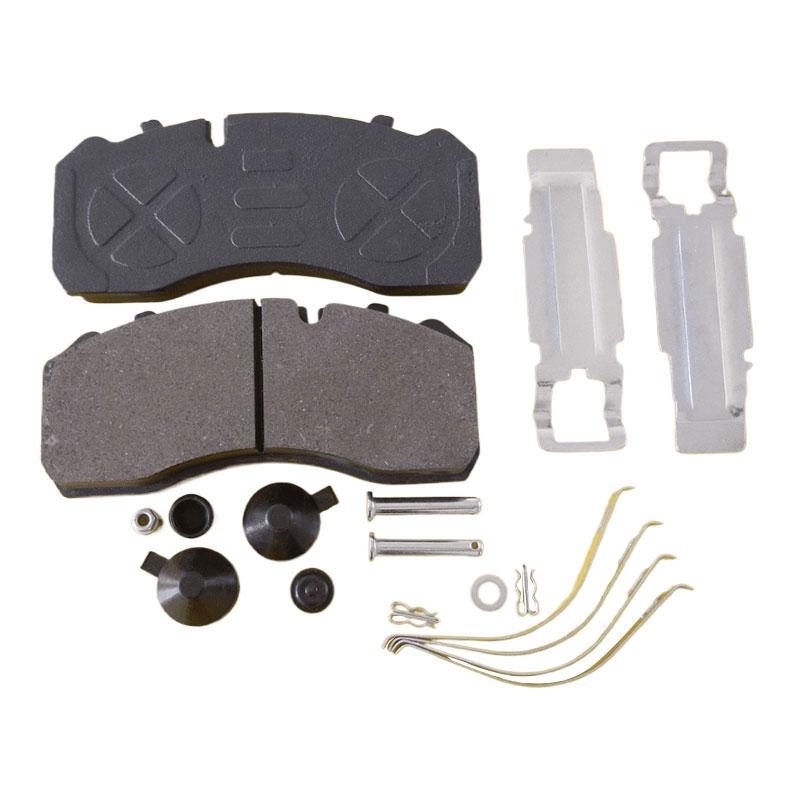
Brake pads play a critical role in your heavy truck’s performance. They ensure safe and reliable stopping power. Choosing the right brake pad significantly influences your truck’s longevity. A poor selection can lead to increased wear and tear, impacting safety and driving costs. Make informed choices to protect your investment.
Key Takeaways
- Choosing the right brake pads enhances your heavy truck’s stopping power, ensuring safety and reliability on the road.
- Regular inspections and timely replacements of brake pads can significantly reduce wear and tear, saving you money on repairs.
- Understanding the signs of brake wear, such as unusual noises or increased stopping distance, helps maintain your truck’s performance and safety.
Types of Brake Pads
When it comes to brake pads, you have three main types to consider: organic, semi-metallic, and ceramic. Each type has its own unique features and benefits.
Organic Brake Pads
Organic brake pads are made from materials like rubber, glass, and resin. They are softer than other types, which means they produce less noise. These pads work well for light-duty trucks and everyday driving. However, they may wear out faster under heavy loads. If you prioritize quiet operation and smooth braking, organic pads might be the right choice for you.
Semi-Metallic Brake Pads
Semi-metallic brake pads contain a mix of metal fibers and other materials. This combination gives them excellent stopping power and durability. They perform well in high-temperature situations, making them suitable for heavy trucks. However, they can produce more noise and dust compared to organic pads. If you often drive in demanding conditions, semi-metallic pads could be your best option.
Ceramic Brake Pads
Ceramic brake pads are made from a blend of ceramic fibers and other materials. They offer great stopping power and produce minimal dust. These pads also operate quietly, making them a popular choice for many truck owners. While they tend to be more expensive, their longevity and performance can make them worth the investment. If you want a balance of performance and low maintenance, consider ceramic brake pads.
Advantages of Brake Pad Selection

Selecting the right brake pad offers several advantages that directly impact your heavy truck’s performance and longevity. Understanding these benefits can help you make informed decisions.
Enhanced Stopping Power
When you choose high-quality brake pads, you gain enhanced stopping power. This feature is crucial for heavy trucks, especially when carrying substantial loads. Quality brake pads provide better friction against the rotors, allowing your truck to stop more effectively. You can trust that your vehicle will respond promptly in emergency situations. This reliability not only keeps you safe but also protects other road users.
Reduced Wear and Tear
Another significant advantage of selecting the right brake pad is reduced wear and tear on your braking system. Quality brake pads are designed to withstand the rigors of heavy-duty use. They minimize the friction that leads to premature wear on rotors and other components. By investing in durable brake pads, you extend the life of your entire braking system. This choice can save you money on repairs and replacements in the long run.
Improved Heat Dissipation
Heavy trucks often generate a lot of heat during operation, especially when braking frequently. Choosing brake pads with excellent heat dissipation properties is essential. Quality brake pads manage heat effectively, preventing brake fade. This means your braking performance remains consistent, even under demanding conditions. You can drive with confidence, knowing that your brake pads will perform reliably, regardless of the situation.
Signs of Brake Wear
Recognizing the signs of brake wear is essential for maintaining your heavy truck’s safety and performance. By staying vigilant, you can prevent costly repairs and ensure your vehicle operates smoothly. Here are some key indicators to watch for:
Visual Indicators of Wear
You can often spot brake wear through visual inspections. Look for these signs:
- Thickness of Brake Pads: Check the thickness of your brake pads. If they appear thinner than 1/4 inch, it’s time for a replacement.
- Cracks or Fractures: Inspect the surface of the brake pads for any cracks or fractures. These can compromise their effectiveness.
- Discoloration: Look for discoloration on the pads. A blue or burnt appearance indicates overheating, which can lead to failure.
- Uneven Wear: If one pad wears down faster than the others, it may signal an issue with your braking system.
Performance Changes
Changes in your truck’s braking performance can also indicate wear. Pay attention to these signs:
- Increased Stopping Distance: If you notice that your truck takes longer to stop, your brake pads may be worn out.
- Squeaking or Grinding Noises: Listen for unusual sounds when braking. Squeaking often means the pads are worn, while grinding indicates severe wear.
- Vibration or Pulsation: If you feel vibrations or pulsations in the brake pedal, this could mean uneven wear or warped rotors.
- Brake Warning Light: If your dashboard warning light activates, it’s a clear sign that you need to check your brake pads.
Recommended Replacement Schedule
To keep your heavy truck in top condition, follow a regular replacement schedule for your brake pads. Here are some guidelines:
- General Recommendation: Replace brake pads every 20,000 to 60,000 miles, depending on your driving habits and conditions.
- Frequent Inspections: Inspect your brake pads every 5,000 miles, especially if you drive in heavy traffic or hilly areas.
- Monitor Performance: If you notice any performance changes, check your brake pads immediately, regardless of mileage.
By staying proactive about brake wear, you can enhance your truck’s longevity and ensure safe driving conditions.
Selecting the right brake pads is crucial for your heavy truck’s safety and longevity. Regular maintenance and timely replacements keep your braking system in top shape. Make informed choices to enhance your truck’s performance and ensure a safer driving experience. Your investment in quality brake pads pays off in the long run.
FAQ
What are the signs that my brake pads need replacement?
Look for thin pads, cracks, unusual noises, or longer stopping distances. Regular inspections help you catch these signs early.
How often should I replace my brake pads?
Replace brake pads every 20,000 to 60,000 miles, depending on driving conditions. Frequent inspections can help you determine the right timing.
Can I mix different types of brake pads?
Mixing brake pad types is not recommended. Consistency in materials ensures optimal performance and safety for your heavy truck.
Post time: Sep-20-2025





